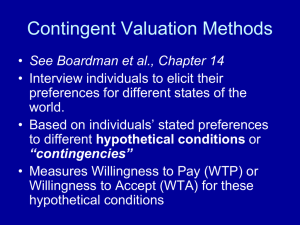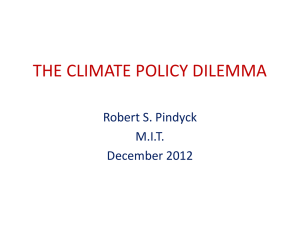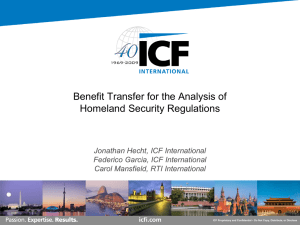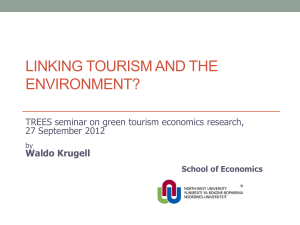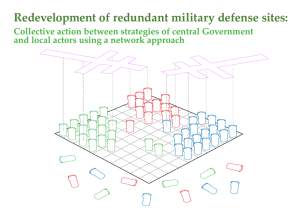Business models for mobility management
advertisement
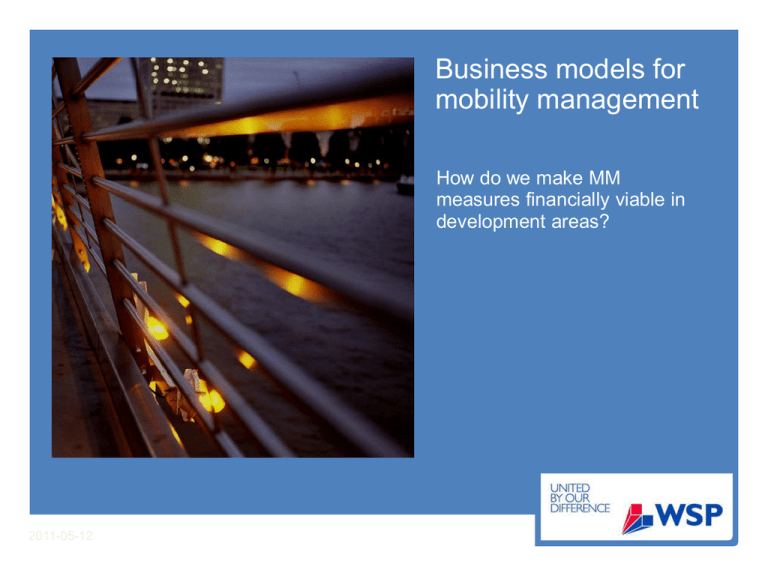
Business models for mobility management How do we make MM measures financially viable in development areas? 2011-05-12 Session overview Background business models for MM Introduction business models MM measures for development areas Group assignment Closing Why do we need business models? In a context of deregulation we can´t rely on public authorities to supply means of travel, to secure a satisfying supply stakeholders will need an answer to the question; What´s in for us? Why mobility management in development areas? Moving flats means breaking old habits, a window of opportunity to promote sustainable transport modes But.. Mobility services needs to be operational from day one, otherwise the result may be the opposite Creates a problem, services are most important when they are the least profitable, business models are needed What is a business model? Description of means and methods a firm employs to earn the revenue projected in its plans. It views the business as a system and answers the question, "How are we going to make money to survive and grow?" Exempels of business models Bricks and clicks Business model that integrate offline (bricks) and online (clicks) presence. For example when a business sells a product online and the customer picks it up in physical store. Collective Companies or organizations who operates in the same or related areas share resources, information or offer other advantages for their customers Component A model developed by IBM to analyze the relationship between a company´s strategy and their organizational ability and investments in order to define abundant or overlapping units Exempels of business models Cutting out the middleman A model where a company sells there product directly to their customers instead of supplying through stores Distribution Several different types of models, franchise, 7Eleven and McDonalds. Freemium, common in digital sales, demo version is free but to use the full version with more functions you have to purchase the product Spotify a freemium that changed a market Free with commercial or monthly fee. Gathers a huge range of different music suppliers (labels) underneath the same cloud. The user only needs one portal to reach everything. Spotify collects revenue and distributes to suppliers. Private Public Partnership “As much value as possible to taxpayers” Does not necessarily have to be financial revenue. A useful service that makes a transportation easier for the public is good value. Having public stakeholders owning processes can ensure longevity for services, however business models can be developed to include private stakeholders in order to cut costs to maintain the system. Model for development areas Restrictions Emission caps Constrained Infrastructure Users External actors Needs Needs Target group Business plan WTP Business model Profitable for everyone MM measures for development areas Car Clubs Bike hire schemes Commuter parking for cyclists ICT solution Travel plans Informations packs Car Clubs Restrictions Must be in place as part of the environmental ambtions and constrained infrastructure External Actors The City: Needs to ensure presence of Car Clubs PT operator: May want offer customers Car Clubs as part of their service. Car Club operators: Wants as many users as possible per car, wants the service to be profitable from day one. Users Wants as small amount of users as possible per car to ensure availability. Wants as cheap service as possible. Wants service to be in place from day one Rental bikes Restrictions Need to be in place to cater for short trips within the area. External actors The City: Wants to make sure short trips are made by bike. PT operator: Have an agreement with a supplier as service for their customers Supplier: Wants as much commercial exposer for their stations as possible Users Companies: Wants their visitors to be able to use the bikes, need stations outside their buildings Inhabitants: Wants stations as close as possible to their flats to make commuting smooth Commuter parking for cyclists Restrictions A certain amount of parkering needs to be in place outside the subway station based on the amount of travellers External actors The City: land owner PT Companies: service needed for thier customers Users Long distance, expensive bikes, WTP moderate if secure Short distance, WTP most likely nothing ICT Restrictions Needs to be in place to make travelling with sustainable modes as easy as possible. External actors All suppliers of travel services wants to expose their products The Municipality wants to make sure the system runs smooth for the inhabitants Users Wants it all in one place Travel Plans Restrictions The Municipality can use the possibility to lower the amount parking if the building companies develop travel plans External actors Buildning companies, wants to build as cheap as possible Landlords, wants to maximize income from tentants, do not want to exclude any possible tenants Travel Plans Users Tenants, wants offices that fits their needs, both in terms of environmental policy and accessibility. Information packs Restrictions The Municipality wants to make sure the inhabitants gets offers and information good enough for them to avoid getting a car External actors All transport providers wants to get their services exposed Users Inhabitants that recently has moved to the area Companies that recently moved into their offices The Case New development area Central location, 3 km to central station 10 000 apartments 30 000 work opportunities Infrastructure already strained High environmental ambitions, 1,5 ton CO2 per inhabitant by 2020 Served initially by subway and buses and later by streetcars High income, usually means high car use The Assignment Develop business models for MM measures: Use different business models May be public, private or PPP Becuse of the high environmental ambitions the City is willing to invest, but they wants external actors and users to carry as much as possible of the cost. External stakeholders Identify and list the external stakeholder Why would they be interested? What are their needs? What is their business plan? Users What different kind of users groups will there be for the service? What are their needs? What is the willingness to pay (WTP) Business model Motive why the business model is profitable for all











